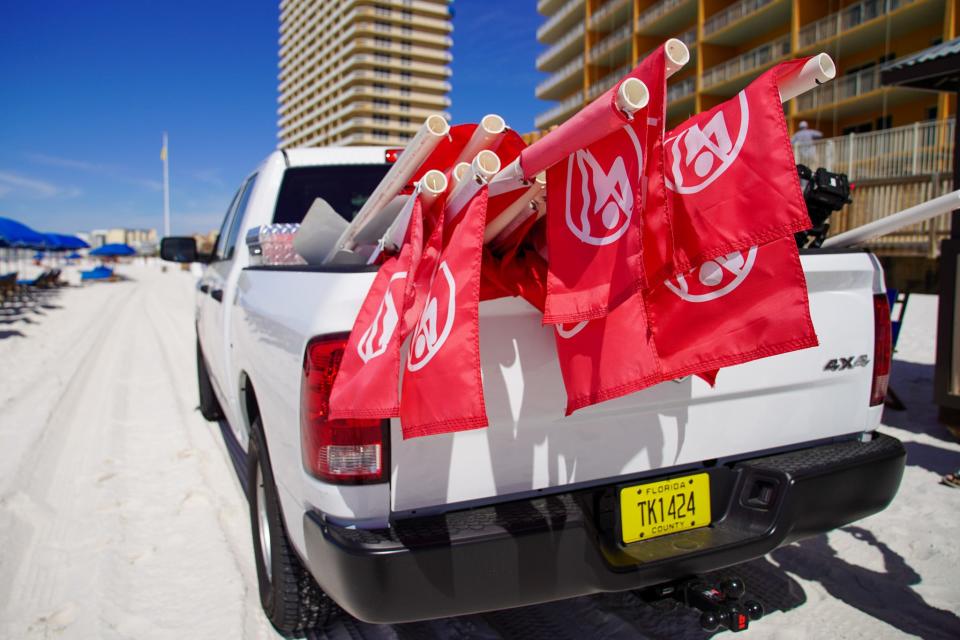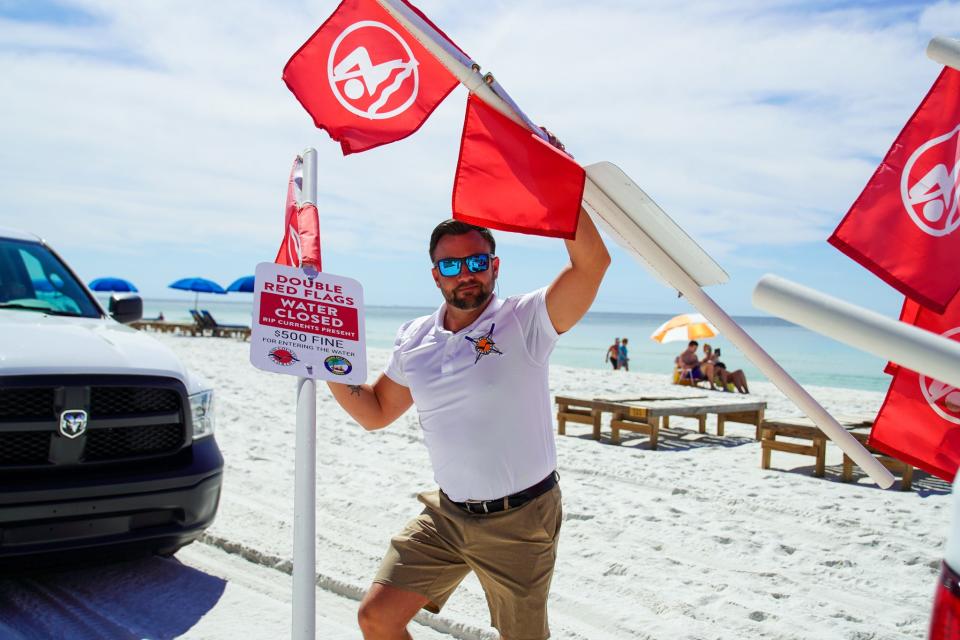'All about safety': Bay partners with PCB, distributes 500 beach safety flags to vendors
PANAMA CITY BEACH — Local officials are continuing a safety initiative that started last year to help protect beachgoers from dangerous currents in the Gulf of Mexico.
According to Clair Pease, a member of the Bay County Commission, the county has partnered with Panama City Beach to distribute more than 500 flags to beach vendors that will be installed along the water's edge when double-red flags fly.
Pease and other leaders hope the flags not only will point out surf conditions, but prevent beachgoers from entering the water during times of double red flags — when it is illegal in Bay County to swim under penalty of a $500 fine.

"People are looking at the Gulf when they come to Panama City Beach," Pease said. "They're not turning around, looking for a flag pole. They're looking at the Gulf of Mexico. They're looking at their kids swimming. ... If the (flag) are right in front of their faces, how can they miss it?"
Bay County began doling out the flags last year, in the wake of a wave of beach drownings. This year, however, will mark the first full tourist season using the more than 500 flags. They are deigned to be just as easy to install as beach umbrellas.
"If it weren't for all the beach vendors, we really wouldn't be able to pull it off," Pease said. "We don't have the manpower to go down there and put these flags at the water's edge."
Past reports note that nine beachgoers drowned in Bay County last year. Of the drownings, six happened off the coast of Panama City Beach, and three happened on unincorporated county beaches outside the city limits.
Two occurred under single red flags, while the seven others happened with double red flags overhead during very rough surf conditions. All the victims were tourists who died after being caught in rip currents.

"People are coming here, (and many) are use to swimming in rivers, streams, ponds and swimming pools," Pease said. "They're not use to swimming in our Gulf of Mexico, where we have a silent current (that) you don't know is there. It can grab you in just a few inches of water, and people don't understand it. They don't think about it."
This silent killer is known as a rip current, which is a fast-moving current created by channels in sandbars. The channels run perpendicular to the shoreline and cause water to funnel faster out into deeper waters. Rip currents can vary in strength, depending on how developed the channels are, and they can sometimes be identified from shore where there is a gap in the wave break — areas where the white caps of the breaks are less noticeable.
Beach rescue: 'Screaming in distress': Bay County responders rescue tourist from Gulf of Mexico
The best thing a swimmer can do if they're caught in a rip current is swim parallel to shore, meaning toward the left or right of where they are in distress. If they do this, they can break free from the current, often landing on a sandbar where they can stand. If they still cannot stand, they will at least be in calmer water where it will be easier to make it back to shore.
"It's all about safety," Pease said of extra measures being taken in Bay County. "All of this is nothing more than safety."
This article originally appeared on The News Herald: Bay County distributes 500 beach safety flags to local beach vendors

